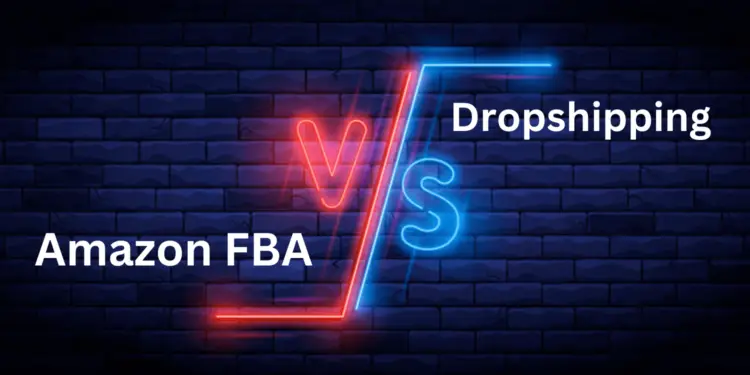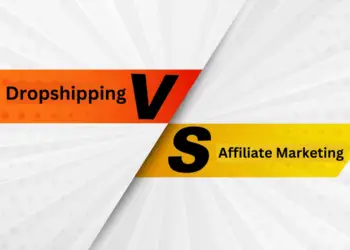Amazon FBA vs Dropshipping: Are you struggling to choose between Amazon FBA and Dropshipping for your online business? Don’t worry, we’ve got you covered! In this post, we’ll compare these two popular eCommerce platforms and help you make an informed decision.
The world of eCommerce is constantly evolving, and more and more people are turning to online shopping. That’s why starting an eCommerce business can be a lucrative venture. Amazon has established itself as a dominant player in the industry, while dropshipping has emerged as a viable alternative.
As a beginner, you might be wondering which platform is best suited for your needs and budget. Our comprehensive comparison will provide you with all the information you need to make the right choice.
- An Overview of Amazon FBA vs Dropshipping
- What Makes Amazon FBA Different from Dropshipping?
- How Does Amazon FBA Work?
- How Does Dropshipping Work?
- Amazon FBA vs Dropshipping – Differences between Them
- Amazon FBA vs Dropshipping: Fees and Investment
- Amazon FBA vs Dropshipping: Shipping Logistics
- Amazon FBA vs Dropshipping: Inventory Management
- Amazon FBA vs Dropshipping: Comparing Selling Channels
- Amazon FBA vs Dropshipping: Competition in eCommerce
- Amazon FBA vs Dropshipping: Profit Margin
- Amazon FBA vs Dropshipping: Control of Seller Account
- Amazon FBA vs Dropshipping: Marketing for Profitable Sales
- Customer Support
- Pros and Cons of Amazon FBA vs Dropshipping
- Which Is Better For Beginners: Amazon FBA or Shopify Dropshipping?
- Frequently Asked Questions
- Conclusion:
So if you’re ready to take the plunge into eCommerce, read on and discover the pros and cons of Amazon FBA and Dropshipping.
An Overview of Amazon FBA vs Dropshipping
Before you dive into the world of eCommerce, it’s important to understand the differences between Amazon FBA and dropshipping. Both platforms have unique business models, so it’s essential to choose the one that aligns with your goals. Here’s an overview of both options:
What is Amazon FBA?
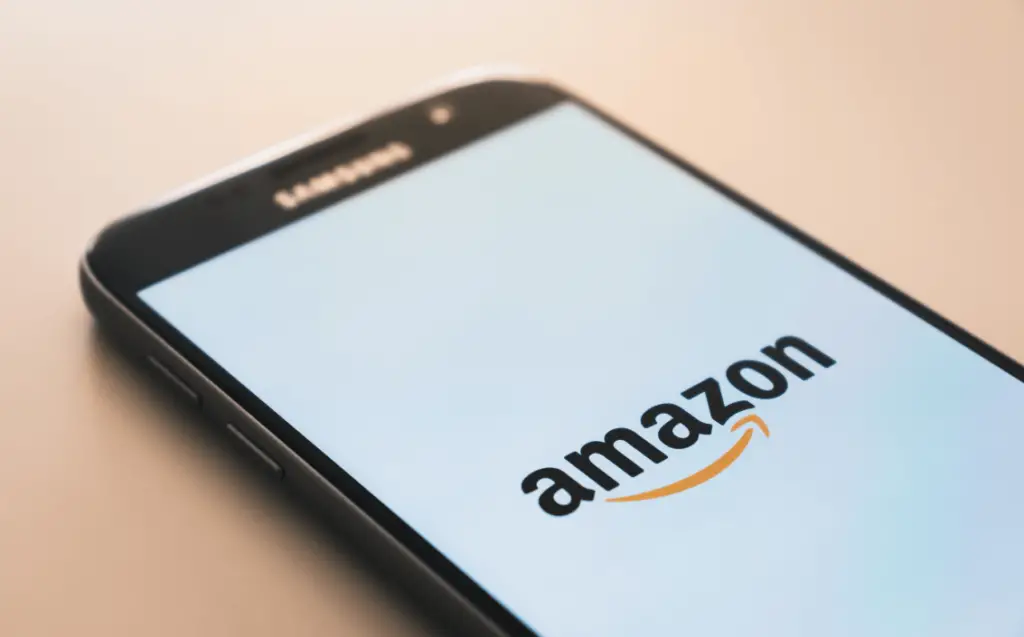
Amazon FBA (Fulfillment by Amazon) is a popular eCommerce business solution that provides support to sellers and merchants looking to sell their products on Amazon. With the biggest marketplace in the world, Amazon FBA is known for its stable business growth.
In 2020 alone, over 1.3 million new sellers joined the FBA program, with India contributing 21.1% of the new seller records. Of these 1.3 million, 13.8% of sellers are from the USA alone and sign up through Amazon.com.
With steady growth each year and a vast marketplace, many vendors see Amazon FBA as an excellent opportunity to start a profitable business.
What is Dropshipping?
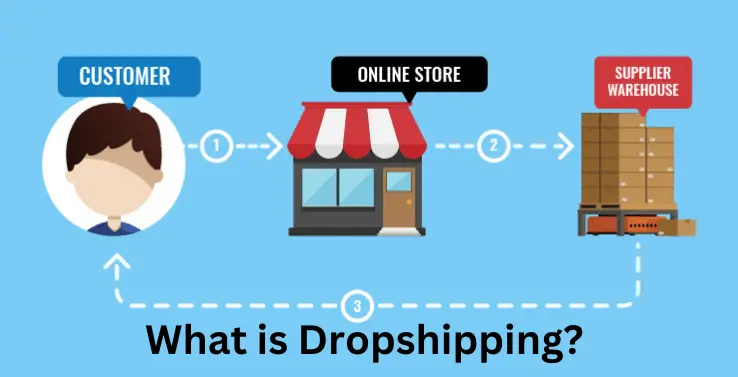
Dropshipping is another popular eCommerce business model where sellers or retailers place orders directly from wholesale companies and ship the goods to customers. The seller acts as a middleman, taking orders from the wholesaler and sending them to the customers.
Dropshipping is a cost-effective and easy way to start an eCommerce business, which is why it’s trending in the retail industry. A recent survey revealed that the global dropshipping market is expected to exceed 28.8% in 2019-2025. Most retailers in the UK, USA, Canada, Australia, and other countries are now using dropshipping.
The best part about dropshipping is that you don’t need to make a massive investment to start your business. Even a low-scale trader can easily reap the benefits of this eCommerce business model.
What Makes Amazon FBA Different from Dropshipping?
If you’re planning to start an online business, you might be wondering about the difference between Amazon FBA and dropshipping. Let’s take a closer look:
With Amazon FBA, you can use Amazon’s fulfillment service to store, package, and ship your products directly to customers. On the other hand, dropshipping is a model where the seller doesn’t keep any inventory and relies on third-party suppliers to fulfill orders. Typically, dropshipping involves selling products on marketplaces like Amazon and having them shipped directly from the supplier’s warehouse.
Both models can be successful in 2023, but it’s important to consider some key differences when comparing Amazon FBA vs dropshipping. These include cost, time, and customer experience.
Using Amazon’s fulfillment service can help reduce costs associated with maintaining inventory and provide access to discounts on shipping rates through the Amazon business platform. However, with dropshipping, there’s no need for an initial investment in inventory, making it an affordable option for those with limited capital.
When it comes to time, Amazon FBA can offer faster delivery times to customers, as they have access to Amazon’s extensive fulfillment network. On the other hand, dropshipping can take longer to deliver products as they rely on third-party suppliers.
Finally, customer experience is critical in eCommerce. Amazon FBA provides a reliable and consistent customer experience, with Amazon handling all customer service inquiries and returns. In dropshipping, the seller is responsible for customer service, and it’s essential to have a good relationship with the supplier to ensure prompt and efficient customer support.
In summary, both Amazon FBA and dropshipping have their advantages and disadvantages. By weighing up the differences, you can choose the best option for your online business.
How Does Amazon FBA Work?
If you’re considering selling your products on Amazon, you may have heard about the Fulfillment by Amazon (FBA) program. But how does it work, and what benefits does it offer to sellers? In this beginner’s guide, we’ll walk you through the process step-by-step.
First, you’ll need to set up an FBA account by logging into Seller Central. Once you’re registered, you can create a list of your products and add them to the Amazon catalog. To ensure your products are ready for secure transportation to the FBA center, follow Amazon’s packaging guidelines and requirements.
Next, you’ll create a shipping plan, print the ID labels, and send the shipment to the Amazon FBA center. From there, Amazon takes care of packaging, storing, and shipping orders to customers. The FBA program also handles returns and exchanges of orders, making it a convenient option for sellers.
One of the significant benefits of the FBA program is that it can help reduce costs associated with maintaining an inventory of products. Amazon also offers access to discounts on shipping rates through its business platform. Individual sellers can start their businesses without paying any fees, but charges will apply to each product item sold.
By joining the Amazon FBA program, you can be an FBA merchant and earn income from selling your products on this popular eCommerce website. With this beginner’s guide, you’ll have a good understanding of how the program works and what it can offer to your online business.
How Does Dropshipping Work?
Dropshipping is a business model where the retailer doesn’t hold inventory. Instead, they partner with wholesalers to source and sell products. Here’s how it works:
- Find a dropshipping supplier who will store the products and manage inventory.
- Create your eCommerce website or platform.
- Customers place orders and make payments through your platform.
- Forward the order to the dropshipping supplier, who prepares and ships the item directly to the customer.
As the retailer, you act as the middleman between the supplier and the customer, handling the marketing, sales, and customer service. With minimal investment, you can start a dropshipping business and reap the benefits of eCommerce.
Amazon FBA vs Dropshipping – Differences between Them
Are you planning to start an eCommerce business, but can’t decide whether to choose dropshipping or Amazon FBA? Let’s explore some key differences between these two popular business models.
Amazon FBA vs Dropshipping: Fees and Investment
When it comes to fees and investment, both dropshipping and Amazon FBA require a minimum investment. However, dropshipping can be started with even less investment than Amazon FBA.
You can start dropshipping with platforms like Shopify or Amazon at a low cost. On the other hand, to become an Amazon FBA seller, you must pay for your product. If you’re an individual seller, Amazon will charge you $0.99 per item you sell. For the professional plan, you will have to pay $35.99 per month, in addition to other fees like referral fees and warehouse charges.
Winner
In terms of investment and fees, dropshipping wins over Amazon FBA, making it a great option for starting an eCommerce business with a limited budget. However, Amazon FBA is suitable for individual sellers looking for stable growth.
Amazon FBA vs Dropshipping: Shipping Logistics
Shipping logistics play a vital role in any eCommerce business. When it comes to shipping products to customers, both dropshipping and Amazon FBA have their own benefits and drawbacks.
With dropshipping, the retailer takes responsibility for the shipment of products to customers. This can result in poor shipping quality, making it important to find a reliable dropshipping supplier who can take care of the shipping process. However, if you choose the right supplier, you can ensure high-quality shipping.
On the other hand, with Amazon FBA, the responsibility for storing, packaging, managing, and shipping the products lies with the Amazon team. This ensures high shipping quality for local shipments. However, when it comes to international clients, FBA may not be able to deliver to certain countries, which can limit your customer base.
Winner
Both dropshipping and Amazon FBA have their own advantages and disadvantages when it comes to shipping logistics. If you want to cater to international clients and have more control over shipping quality, dropshipping can be a good option. However, if you prioritize local shipments and want to rely on Amazon’s reliable shipping infrastructure, Amazon FBA is the way to go. Ultimately, the choice depends on your specific business needs and priorities.
Amazon FBA vs Dropshipping: Inventory Management
When it comes to inventory management, there is a significant difference between the dropshipping and Amazon FBA models. With dropshipping, you act as a middleman between the supplier and the customer, so you don’t have to worry about inventory management. Instead, you simply facilitate the sale and earn a profit.
On the other hand, Amazon FBA offers inventory management and warehousing facilities. They store your products in their warehouses, allowing you to maintain a constant supply of products for your customers. However, you may have to pay for warehousing charges, although they are typically minimal.
Winner
In terms of choosing a winner, it ultimately depends on your business model. Dropshipping is ideal if you want to earn high profits and don’t want to worry about creating or storing stock. You can select high-ticket products and make a significant profit margin. However, if you want to maintain a constant supply of products, inventory management is essential. In this case, the Amazon FBA model may be the better option for you.
Ultimately, both models have their pros and cons, so it’s essential to consider your business goals and needs before making a decision.
Read also:
- Dropshipping vs Affiliate Marketing: Which One Is Better?
- Clickfunnels vs Shopify 2023 | Which One Is The Best?
- Hostinger Review (2023): Pros & cons
Amazon FBA vs Dropshipping: Comparing Selling Channels
When it comes to selling channels, Amazon FBA has a clear advantage over dropshipping. Amazon’s brand reputation and wider customer base provide assured traffic and multiple selling channels to catch customers.
On the other hand, dropshipping businesses may struggle to get traffic and sales at the beginning. However, with a solid marketing strategy, they can establish a presence in the market over time.
While Amazon’s selling channel offers more opportunities to earn income, dropshipping has its advantages. It’s a cheaper option, and you can earn high profits by selecting high-ticket products.
Winner
In summary, Amazon FBA is the clear winner in terms of selling channels and sales opportunities. However, dropshipping can be a profitable option if you follow the best-selling and marketing strategy. Ultimately, the choice depends on your business goals and budget.
Amazon FBA vs Dropshipping: Competition in eCommerce
No matter which eCommerce model you choose, competition is always a factor to consider. With FBA, you may face numerous challenges as sellers vie for customers’ attention. This makes Amazon FBA better suited for experienced entrepreneurs who understand how to maximize sales and beat the competition. Despite the challenges, FBA offers plenty of traffic, which can increase your chances of success.
Similarly, with dropshipping, you will face competition from other retailers who offer similar products at competitive prices. This means that wholesalers must compete to attract customers with lucrative deals and effective marketing strategies.
Winner
There is no clear winner when it comes to competition in eCommerce. Whether you choose dropshipping or Amazon FBA, you will face competition from other sellers. However, with the right strategies, both models can be successful. It is up to you to develop a unique selling proposition and effective marketing plan to stand out from the competition.
Amazon FBA vs Dropshipping: Profit Margin
When it comes to choosing a business model, making maximum profit is often a top priority. Luckily, both Amazon FBA and Dropshipping can be profitable, but the question is how much profit can you make? Dropshipping is a good option if you aim to earn more profit by selling limited goods, allowing you to earn 15-20% of the profit from each sale.
However, the profit margin depends on the cost of goods that you sell, and you can adjust it to increase or decrease your profit. On the other hand, with Amazon FBA, the profit margin is different and depends on the amount of margin you keep. It can range from 1-5% or even go as high as 30% or more.
Advanced sellers tend to keep a high-profit margin as they have many products to sell on Amazon. So, it’s up to you to decide the profit margin you want to keep and how many products you want to sell. The higher the profit margin, the more income you can potentially earn.
Winner
Both Dropshipping and Amazon FBA can be profitable, and the amount of profit you can make depends on the profit margin you set. Unfortunately, there are no restrictions on the profit margin for either business model.
Amazon FBA vs Dropshipping: Control of Seller Account
For many sellers, having control over their seller account is crucial. Dropshipping allows you to have complete control over your business, including marketing, selling accounts, and profit margins. You are the owner of your business, and if your dropshipping account gets suspended, you can still start anew with a new email.
On the other hand, with Amazon FBA, Amazon’s algorithm and reviews are still in control of your business, putting your business at greater risk. While Amazon FBA can provide exposure to a larger marketplace and potentially greater profits, you may not have full control over your business.
Winner
Dropshipping is the clear winner here, as it allows for complete control over your business. However, if exposure to a larger marketplace and potential profits are more important to you, Amazon FBA may be the better option.
Amazon FBA vs Dropshipping: Marketing for Profitable Sales
Maximizing sales is crucial for any business, and to achieve this goal, it is necessary to drive traffic to your platform. To achieve this, various marketing strategies can be used. For Amazon FBA sellers, the Amazon keyword finder tool can be leveraged to identify the right keywords that can help drive traffic.
This tool helps entrepreneurs to optimize their product lists for better ranking on Amazon’s search page, thereby attracting more traffic. Although the tool generates organic traffic, the algorithm that determines the ranking is automatic, which can make it challenging for beginners to compete with advanced sellers for a spot on the top page.
On the other hand, dropshipping businesses can leverage paid advertisement services such as PPC and Google Ads to generate high traffic. Though it requires a budget plan to run paid advertisements, the results are worth it as it can attract more traffic to your platform.
Winner
Both dropshipping and Amazon FBA are winners here as both offer satisfactory results to drive traffic to your platform. However, to generate more traffic for dropshipping businesses, investing in paid advertisement may be necessary. The advantage of running paid advertisements is that you can advertise your product anywhere.
While Amazon FBA requires the Amazon SEO tool, it is budget-friendly and only works on Amazon pages. Ultimately, the key to success is to pull in more traffic to improve sales, and both dropshipping and Amazon FBA offer ways to achieve this goal.
Customer Support
Providing excellent customer support is essential for any business, especially in e-commerce. Both Amazon FBA and dropshipping offer customer support systems, but Amazon FBA’s system is superior. It allows customers to reach out via phone or submit a query form, resulting in faster responses.
On the other hand, dropshipping’s customer support system is relatively dry, making it difficult to handle quick queries. While dropshipping still offers customer support, it may not be as efficient as Amazon FBA.
Ultimately, having a reliable customer support system is crucial for maintaining customer satisfaction and building a positive reputation for your business. Consider choosing a platform that offers robust customer support, such as Amazon FBA, to ensure your customers’ needs are met promptly and efficiently.
Pros and Cons of Amazon FBA vs Dropshipping
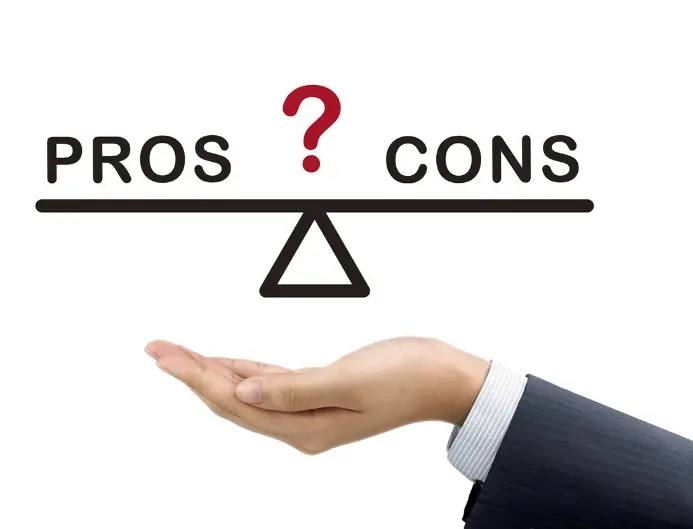
When deciding between dropshipping and Amazon FBA, it’s important to weigh the pros and cons of each business model. Let’s take a closer look at both to determine which one is right for you.
Dropshipping Pros:
- Low start-up costs and no need for inventory stock or solid establishment.
- Minimal risk as sellers handle packaging and shipments.
- Convenient and easy to manage, allowing you to do business from anywhere.
- Not time-consuming, as the seller handles most of the work.
Dropshipping Cons:
- Highly competitive market, leading to low profit margins.
- Limited promotional deals and customer service.
Amazon FBA Pros:
- Excellent customer service and marketing tools available.
- Potential for massive growth and high profits due to the vast customer base.
- Easy return and replacement policies, creating a better customer experience.
- Amazon SEO service to help rank your products.
Amazon FBA Cons:
- High competition and shipping problems.
- Inability to keep track of inventory stock.
Choosing between dropshipping and Amazon FBA depends on your business goals and priorities. Dropshipping may be a good option for those looking for low risk and minimal investment, while Amazon FBA offers the potential for higher profits and customer support. Consider both options carefully before making a decision.
Which Is Better For Beginners: Amazon FBA or Shopify Dropshipping?
When starting an e-commerce store, choosing between Amazon FBA and Shopify Dropshipping can be a tough decision. Both models have advantages and disadvantages, and it can be challenging to determine which is the best fit for beginners.
Dropshipping is an excellent option for those just starting with online stores because there’s no need to buy or keep inventory. However, if you want more control over the fulfillment process and are willing to invest in inventory upfront, FBA may be the better option for you.
With FBA, Amazon manages storage, packaging, shipping, and customer service. On the other hand, dropshipping allows you to handle all of these aspects yourself. In 2023, Dropshipping is still a great way to start a business, especially if you don’t want to invest large amounts of money into inventory.
You can find suppliers and source products that match your needs and customers’ demands with dropshipping. You can order the items directly from manufacturers or wholesalers and have them shipped straight to your customers.
Frequently Asked Questions
How to start the amazon dropshipping?
If you’re looking to start a profitable dropshipping business on Amazon, it’s important to follow these key steps:
- Choose an eCommerce platform like Amazon
- Create an Amazon seller account
- Get approval in the product category you want to sell in
- Connect your Amazon account to Shopify or Alibaba
- Create your Amazon product listing and sync your inventory directly with the Amazon sales channel
- Start your dropshipping business!
By following these steps, you’ll be on your way to running a successful dropshipping business on Amazon with minimal investment.
Which of the business model is profitable?
When it comes to choosing a business model that can help you earn maximum profit, it can be a tough decision. However, if you’re a beginner and looking to invest less while earning more, then dropshipping might be the right choice for you. With dropshipping, you can keep your profit margins up to 30% or even more by collaborating with high-ticket sellers and retailers.
On the other hand, if you’re looking for stable business growth and a perfect profit margin, then Amazon FBA business might be the way to go. Similar to dropshipping, you can set your profit margin and earn maximum profit. With FBA, Amazon takes care of storage, packaging, shipping, and customer service, allowing you to focus on growing your business.
How much time does it take to start a profitable business on Amazon FBA or Dropshipping?
As the largest online marketplace, Amazon offers abundant opportunities to rank your products on top of their search engine results and earn profits by selling more products. However, starting a profitable business on Amazon usually takes three to six months.
Meanwhile, dropshipping may take longer to start earning profits because you need to generate traffic and invest in advertising. It may take over six months to maintain a steady flow of revenue with this business model. But once your dropshipping business starts making a profit and gaining maximum traffic, it will be a win-win situation for you.
Conclusion:
In summary, both dropshipping and Amazon FBA are great eCommerce business models with their own advantages and disadvantages. If you’re a beginner and have a limited budget, then dropshipping is the perfect option to start with, as it requires minimal investment and is easy to set up. On the other hand, if you have a high-quality product and want to establish a successful business with a steady growth rate and higher profit margins, then Amazon FBA is the way to go. Additionally, you can even combine dropshipping with Amazon for a hybrid approach. We hope this article has helped you understand the differences between these models and choose the right one for your business.

